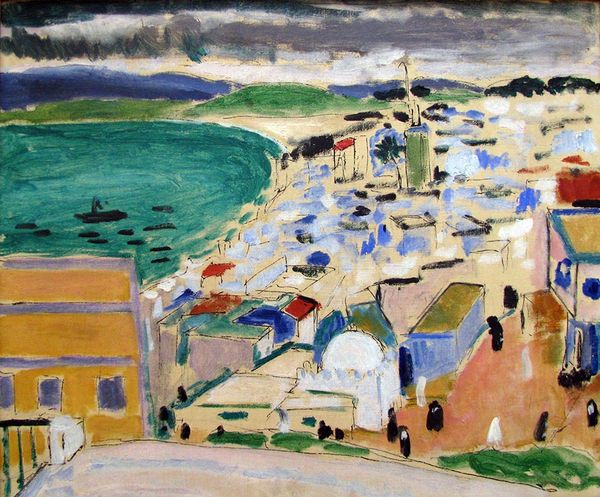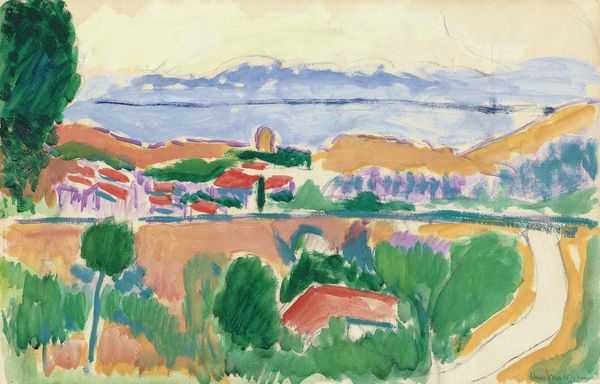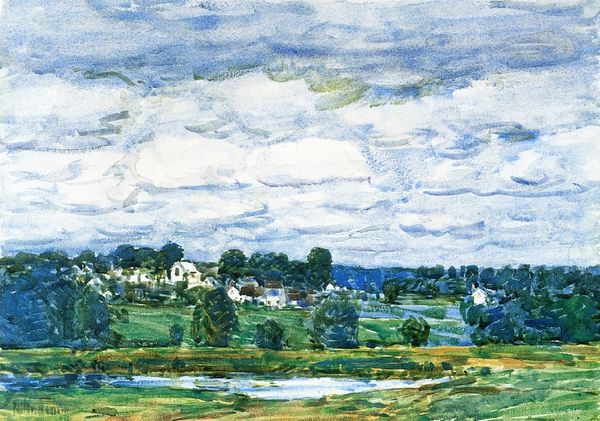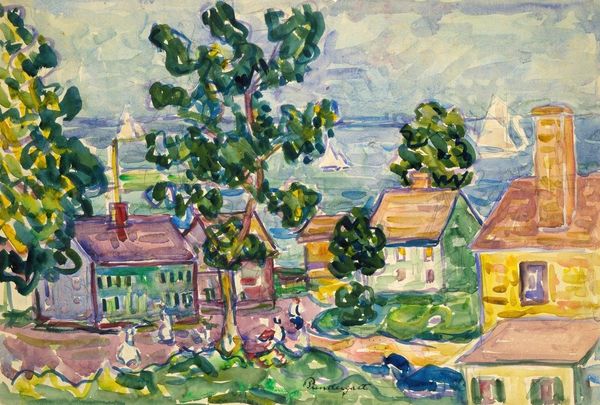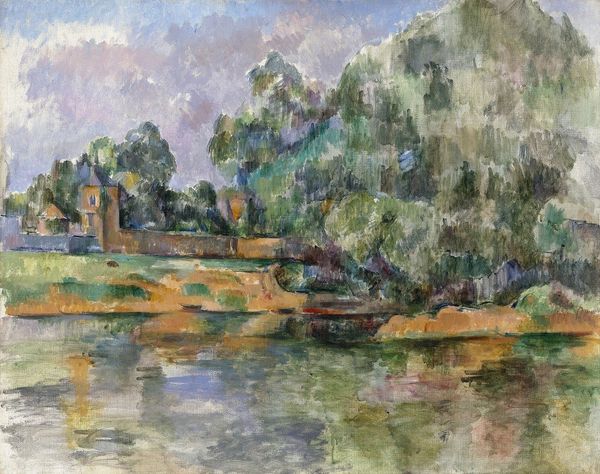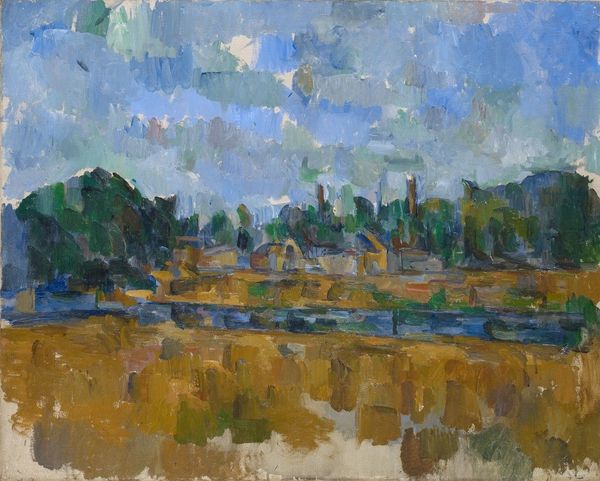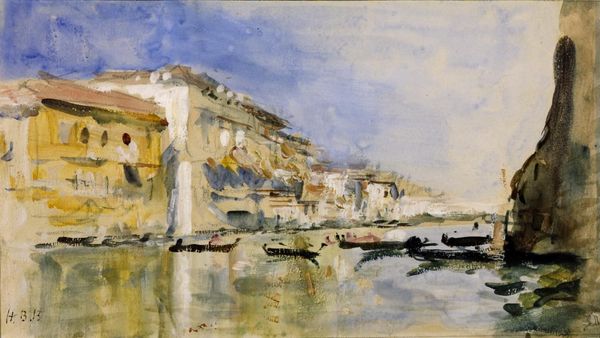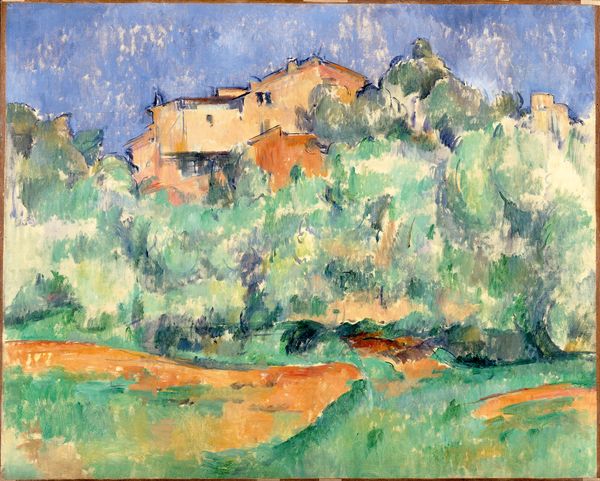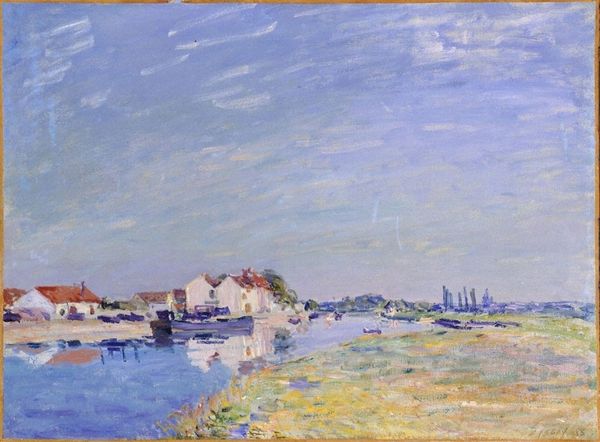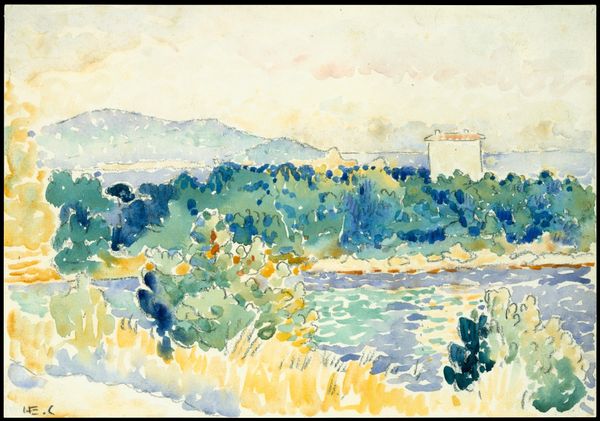
Copyright: Public domain
Curator: This work is Childe Hassam's "Newfields, New Hampshire," painted in 1918. It’s a watercolor on paper, a stunning example of his Impressionistic landscapes. Editor: Immediately, I see a sort of idyllic New England postcard – serene, peaceful, a bit dreamy, if I'm being honest. The palette is surprisingly vibrant. Curator: Hassam certainly captures a particular American essence. What I find intriguing is how he juxtaposes the structural elements—the architecture—with the fluidity of the natural forms, right? There’s the crisp village perched on a hillside contrasted against this luminous waterway. Editor: True, that visual dichotomy really grabs you. Structurally, you have those firm, upward lines of the church spire playing against the long, horizontal brushstrokes depicting the water. He establishes a clear tension there, wouldn't you agree? Semiotically speaking, the church and village become almost symbolic representations of community, stability perhaps? Curator: Maybe. Or maybe Hassam’s just messing with us! Think about it, during WWI he was all in on those flag paintings—patriotic as heck—but there's a looser, almost skeptical vibe sneaking into his landscapes here, especially with that wobbly rendering of forms. Like, is anything *really* stable? Even that quintessential New England town? Editor: Ah, you suspect a subtext of wartime anxieties bleeding into the art! Interesting. Still, focusing on the purely formal aspects, the interplay between color temperatures contributes so much. Cool blues in the water and sky… juxtaposed with these bursts of earthy tones… almost singing a comforting song about the continuity of the seasons. Curator: Exactly! Hassam's never truly morose. Even with implied uncertainties, there's a joy in the act of *seeing*. And look at the paper—it glows! That's watercolor doing its thing—a transparent luminosity he’d have appreciated since he embraced "plein-air" which is all about painting with light from observation of nature. Editor: Indeed. Thinking about it now, those rapid strokes could suggest impermanence while, at the same time, that persistent, rhythmic application becomes a monument to lived moments. Art always leads me to more complex thoughts. Curator: Me too! And after looking together, I think that, if he were here, Hassam might raise a glass to both our approaches. Because at the end of the day it really is all in the seeing!
Comments
No comments
Be the first to comment and join the conversation on the ultimate creative platform.
